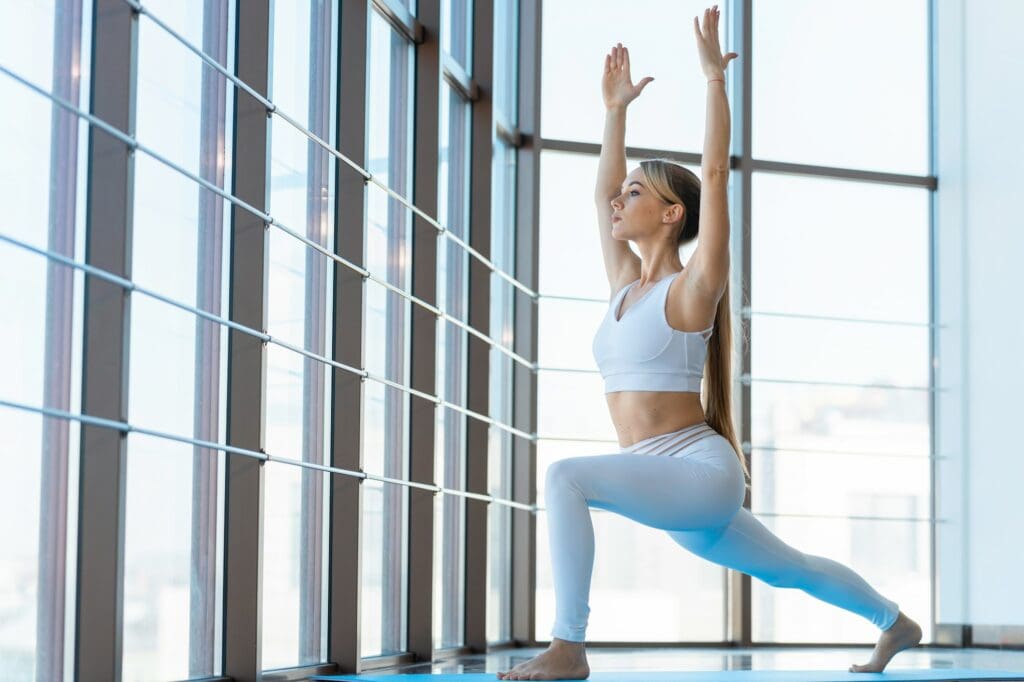


In today’s fast-paced world, anxiety is a common experience for many of us. It’s not just the big, stressful events that contribute to anxiety; it’s also the daily grind, the constant connectivity, and the never-ending to-do lists.
But here’s the good news: mindfulness practices can be powerful tools for reducing anxiety.
Whether you’re new to mindfulness or have some experience, integrating these practices into your life can bring a profound sense of calm and balance.
“Mindfulness isn’t difficult, we just need to remember to do it.” — Sharon Salzberg
By focusing on the present moment, you can learn to manage anxiety more effectively. This article explores the most effective mindfulness practices that can help you reclaim your peace of mind.

When it comes to reducing anxiety, several mindfulness techniques stand out for their effectiveness.
These practices help anchor you in the present moment, offering a buffer against the racing thoughts and worries that often accompany anxiety.
Mindfulness meditation involves sitting quietly and focusing on your breathing, bodily sensations, or a word or phrase.
This technique helps you step back from anxious thoughts, creating a mental space where you can observe these thoughts without judgment.
Studies have shown that mindfulness meditation can effectively reduce symptoms of anxiety and panic disorders.
The body scan exercise requires you to pay attention to different parts of your body, usually starting from your toes and moving up to your head.
This practice can increase your awareness of bodily sensations, helping you identify areas of tension or discomfort tied to anxiety. Additionally, it fosters a state of relaxation and decreases stress levels.
Loving-Kindness Meditation (LKM) encourages the cultivation of compassion and kindness, first towards yourself and then towards others.
By focusing on positive emotions, LKM can help mitigate the impacts of anxiety, making it easier to cope with challenging situations.
Mindful eating involves paying full attention to the experience of eating and drinking. This means savoring each bite, noticing the flavors, textures, and smells, and being conscious of your body’s hunger and fullness signals.
Practicing mindful eating can help reduce anxiety by grounding you in the present moment and providing a break from stress-inducing thought patterns.
By integrating these mindfulness techniques into your daily routine, you may find a greater sense of calm and an improved ability to manage anxiety.

Understanding how to practice mindfulness can significantly enhance your ability to manage anxiety. Here are some practical steps to get you started:
Integrating mindfulness into your daily routine doesn’t have to be complex. Simple practices like body scan or mindful eating can effortlessly fit into your schedule.
During a body scan, focus on different parts of your body, noticing any tension or discomfort without trying to change anything.
For mindful eating, pay close attention to the textures, tastes, and smells of your food. By involving multiple senses, these activities can ground you in the present moment.
Additionally, consider joining a mindfulness-based course, such as Mindfulness-Based Stress Reduction (MBSR). Courses like MBSR teach you strategies for applying mindfulness to stressful situations and daily life.
These courses often introduce you to the seven foundational attitudes for practicing mindfulness, including patience, acceptance, and non-striving.
Remember, there’s no one-size-fits-all approach. Experiment with different techniques and find what resonates best with you. The key is consistency and patience.
Over time, mindfulness can become a powerful tool in your anxiety-reduction toolbox.
To help you navigate through anxiety, there are several highly effective mindfulness practices to incorporate into your daily life. These practices not only ease the symptoms of anxiety but also enhance your overall well-being.
Mindful breathing is a simple yet powerful technique. By focusing on your breath, you can bring your mind back to the present moment, away from the anxious thoughts that often dominate your mind.
Start by sitting or lying down in a comfortable position. Close your eyes and take a deep breath in through your nose, hold for a few seconds, and then slowly release it through your mouth.
Observe the sensation of your breath filling your lungs and then gently leaving your body.
This technique involves tensing and then slowly relaxing different muscle groups in your body, which helps to release physical tension that often accompanies anxiety.
Begin by finding a quiet place where you won’t be disturbed. Close your eyes and take a few deep breaths. Start with your toes, clench the muscles tightly for a few seconds, and then release.
Gradually move up your body, working each muscle group until you reach your head.
Guided imagery involves visualizing calming scenes, which can help redirect your focus from anxious thoughts to more peaceful imagery.
You can either do this on your own or listen to an audio guide designed to lead you through the visualization.
Try to engage all your senses in the imagery: see the colors, hear the sounds, smell the scents, and feel the sensations of the environment you are imagining.

Yoga combines physical postures, breath work, and meditation, making it a holistic practice for managing anxiety. The gentle stretches help release physical tension, while the breath work and meditation components help calm the mind.
Attending a yoga class can be beneficial, but there are also plenty of online resources available if you prefer practicing at home.
Incorporating these mindfulness practices into your daily routine can significantly reduce anxiety and promote a sense of inner peace.
Experiment with different techniques to discover which ones resonate most with you and fit best into your lifestyle.
Body scan meditation is a systematic way of tuning into your body, fostering a deeper connection with your physical self.
This practice involves paying close attention to different parts of your body, usually starting from the toes and gradually moving up to the head.
By doing so, you cultivate an awareness of physical sensations, such as tension, discomfort, or relaxation.
To begin a body scan meditation, find a quiet and comfortable place to lie down or sit. Close your eyes if it feels comfortable, and start by taking a few deep breaths.
As you breathe, bring your attention to your toes. Notice any sensations you might feel—warmth, coolness, pressure, or even the absence of sensation.
From your toes, slowly and mindfully move your attention upward through your feet, legs, torso, arms, and finally, to your head. Spend a few moments focusing on each body part, acknowledging any feelings without judgment.
If your mind wanders, gently bring it back to the area you were focusing on.
The body scan technique can effectively reduce anxiety by grounding you in the present moment and helping you develop a non-reactive awareness of your physical state.
By learning to observe your body’s sensations without immediately reacting to them, you train your mind to handle discomfort and stress more effectively.
This practice is not only beneficial for anxiety reduction but also enhances your overall mindfulness.
You’ll likely find that with regular practice, your ability to tune into and appreciate your body’s signals improves, promoting a greater sense of calm and well-being.

Long-term engagement with mindfulness practices brings a myriad of benefits, particularly for those grappling with anxiety.
By consistently integrating mindfulness into your daily life, you can expect to see both psychological and physical improvements.
One of the significant advantages of long-term mindfulness is the reduction in anxiety and panic symptoms.
A study has shown that individuals with generalized anxiety disorder or panic disorder experienced notably lower symptoms of anxiety and panic through regular mindfulness meditation.
This practice does more than just alleviate immediate distress; it builds resilience over time, effectively defending against future stress.
Psychological well-being also gets a significant boost. Engaging in mindfulness fosters a deep and lasting sense of peace and enhances overall life satisfaction.
It’s not just about feeling good in the moment; mindfulness contributes to an enduring positive outlook.
Physical benefits are equally noteworthy. Regular mindfulness practice can improve heart health by reducing blood pressure and heart rate, which are often exacerbated by anxiety.
Studies suggest that mindfulness may positively impact cardiovascular health, offering a holistic approach to well-being.
Additionally, it has been shown to improve pain tolerance, making it beneficial for those dealing with chronic pain conditions.
Furthermore, focus, attention, and the ability to work under stress can significantly improve with consistent mindfulness training.
Whether you’re a student dealing with academic pressure or a professional navigating a high-stress job, mindfulness equips you with the tools to maintain calm and enhance productivity.
In essence, the long-term benefits of mindfulness for anxiety aren’t confined to mental health alone. They extend to various facets of physical well-being, creating a robust, holistic approach to handling life’s challenges.
As you continue to practice mindfulness, you’ll likely find that your ability to cope with anxiety improves, leading to a more balanced, happier life.
Yes, mindfulness can indeed help with anxiety. Research has shown that mindfulness meditation can effectively reduce symptoms of anxiety and panic in people with generalized anxiety disorder or panic disorder.
By helping you stay present and focused, mindfulness creates a sense of calm and can reduce the overwhelming feelings that accompany anxiety.
The connection between mindfulness and anxiety reduction lies in mindfulness’s ability to promote a present-focused awareness.
By training your mind to focus on the here and now, mindfulness reduces the tendency to ruminate on the past or worry about the future—both common triggers for anxiety.
This shift in focus can result in a decrease in anxiety and an overall improvement in mental well-being.
Breathing plays a central role in mindfulness practices for anxiety. Mindful breathing involves paying close attention to the breath, observing its natural flow without trying to change it.
This practice helps to anchor you in the present moment, slow down your heart rate, and activate the body’s relaxation response. As a result, it can significantly alleviate anxiety symptoms and promote a sense of calm.
There are several mindfulness apps available that can help with anxiety, including:
Yes, mindfulness practices can help with panic attacks. By employing mindfulness techniques such as mindful breathing and body scanning, you can become more attuned to the early signs of a panic attack.
This heightened awareness allows you to address the symptoms before they escalate, helping to calm your mind and body. Additionally, regular mindfulness practice can reduce the overall frequency and intensity of panic attacks over time.
Don’t let anxiety run your life. Implementing these mindfulness practices can lead to significant reductions in anxiety and an overall improved sense of well-being.
By incorporating techniques like mindful breathing, progressive muscle relaxation, and yoga into your daily routine, you’re not just battling anxiety; you’re fostering a more serene and balanced lifestyle.
Remember, the key to mindfulness is consistency and patience. Whether you’re new to these practices or you’ve been doing them for years, approach each session with a beginner’s mind—open, curious, and non-judgmental.
Trust in the process, accept where you are, and let go of any expectations. Over time, you’ll likely notice a profound shift in how you respond to stress and anxiety.
Ultimately, mindfulness is about more than just reducing anxiety; it’s about cultivating a deeper connection with yourself and the present moment. So, take a deep breath, and embark on this journey towards a more peaceful and mindful life.









